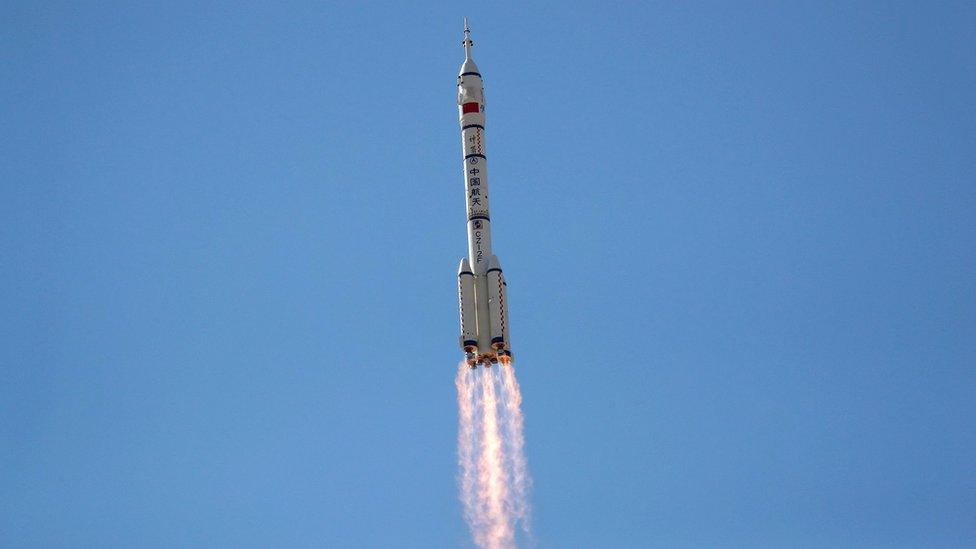Tiangong space station: China launches astronauts into space
- Published
- comments

The Shenzhou-12 capsule successfully took off atop its Long March 2F rocket
3... 2... 1... Blast off! China has just sent three astronauts into space.
The astronauts - Nie Haisheng, Liu Boming and Tang Hongbo - will spend three months living and working onboard the Tianhe module, which will form part of a new space station called the Tiangong space station.
"I have a lot of expectations," said Mr Nie said ahead of the launch.
"We need to set up our new home in space and test a series of new technologies. So, the mission is tough and challenging. I believe with the three of us working closely together, doing thorough and accurate operations, we can overcome our challenges. We have the confidence to complete the mission," he said.
In the last six months China has really amped up its space exploration, by analysing rock and soil samples from the Moon, and landing a six-wheeled rover on the surface of Mars - but this will be China's first crewed mission (with astronauts) in almost five years.
What is the Tiangong space station?
Move over ISS, there's a new space station in town! What the Tiangong space station will look like when it is completed
The astronauts will live onboard the Tianhe module during their three-month stay in space, which was launched back in April and will form part of the new Tiangong space station.
Like the International Space Station (ISS), the Tiangong space station will be a place for astronauts and cosmonauts to live, work and study in space.
The name "Tiangong" means "heavenly palace", and over the next few years, more modules will be joined together to form the finished station.
The Tiangong-1 was China's first attempt at having a space station. It was launched in 2011, and fell back to Earth (as planned) in 2018.
The 70-tonne outpost will orbit the Earth and will have living quarters, science labs and even a Hubble-class telescope to view the cosmos.
Ji Qiming, an assistant director with China's human spaceflight agency, said he welcomes other astronauts: "It is believed that, in the near future, after the completion of the Chinese space station, we will see Chinese and foreign astronauts fly and work together."
- Published17 December 2020
- Published23 October 2021
- Published20 November 2018
